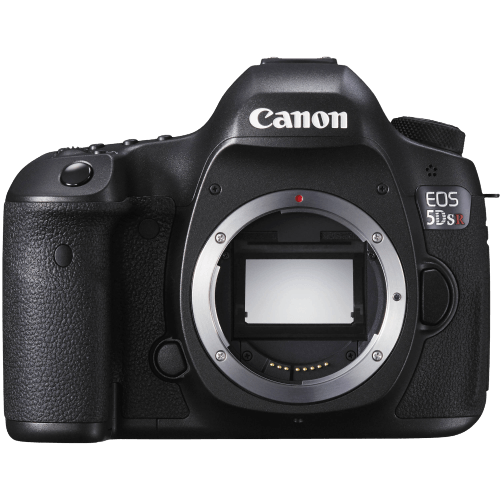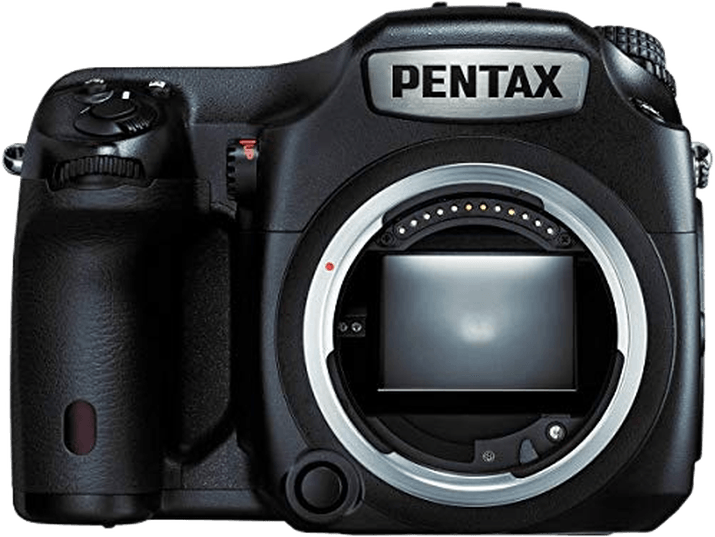Canon EOS 5DS R vs Pentax 645Z Comparison
Canon EOS 5DS R

Pentax 645Z

The Pentax 645Z outperforms the Canon EOS 5DS R with a score of 73/100 compared to 68/100. Both cameras are DSLRs, announced in 2014 and 2015 respectively. They share similarities in size, with the Canon measuring 152 x 116 x 76mm and the Pentax at 156 x 117 x 123mm. However, the Pentax 645Z is significantly heavier at 1550g, while the Canon weighs 930g.
The higher score of the Pentax 645Z showcases its superior performance. Despite being an older model, it still maintains a higher launch price of $8499 compared to the Canon’s $3900. On the other hand, the Canon EOS 5DS R has the advantage of being lighter and more affordable.
Taking these factors into account, the Pentax 645Z is a better camera overall, but the Canon EOS 5DS R remains a viable option for those seeking a lighter and more budget-friendly alternative.
Canon EOS 5DS R vs Pentax 645Z Overview and Optics
The Pentax 645Z is the winner in the optics comparison, scoring 79/100, while the Canon EOS 5DS R scores 73/100. Both cameras share some common specifications, such as having a CMOS sensor, no image stabilization, and a similar megapixel count (51.4 for the Pentax 645Z and 50.6 for the Canon EOS 5DS R).
The Pentax 645Z outperforms the Canon EOS 5DS R in several aspects. Its medium format sensor size is larger than the full-frame sensor of the Canon EOS 5DS R, which contributes to its superior DXOMARK sensor score of 101, compared to 86 for the Canon EOS 5DS R. The larger sensor size enables better image quality and greater detail. Additionally, the Pentax 645Z has a 4:3 aspect ratio, providing more flexibility in composing images, especially for printing and framing.
On the other hand, the Canon EOS 5DS R has some advantages over the Pentax 645Z. Its shooting speed of 5 frames per second is faster than the 3 frames per second of the Pentax 645Z, making it more suitable for capturing fast-moving subjects. Furthermore, the Canon EOS 5DS R utilizes a dual Digic 6 processor, which may provide better processing performance than the Prime III processor of the Pentax 645Z.
Taking all factors into account, the Pentax 645Z is the better camera in terms of optics due to its larger sensor size, higher DXOMARK sensor score, and more versatile aspect ratio. However, the Canon EOS 5DS R still has its merits with a faster shooting speed and potentially better processing performance. Ultimately, the choice between these two cameras will depend on the specific needs of the photographer.
Canon EOS 5DS R vs Pentax 645Z Video Performance
The Pentax 645Z outperforms the Canon EOS 5DS R in video capabilities, with a score of 70/100, a 13-point lead over the Canon’s 57/100. Both cameras share some common specs, including Full HD (1920 x 1080) maximum video resolution and built-in time-lapse functionality.
The Pentax 645Z excels with a higher maximum video frame rate of 60fps, which is double the Canon EOS 5DS R’s 30fps. This higher frame rate allows the Pentax 645Z to capture smoother and more detailed video, particularly in fast-paced situations or when recording action scenes.
On the other hand, the Canon EOS 5DS R does not offer any significant advantages in video capabilities over the Pentax 645Z. Its lower maximum video frame rate of 30fps may limit its potential in capturing fast-moving subjects or events with the same level of detail and smoothness as the Pentax 645Z.
Considering these points, the Pentax 645Z is the clear winner in terms of video capabilities, thanks to its higher maximum video frame rate of 60fps. This advantage makes it a more suitable choice for users who prioritize video performance in their camera selection. Meanwhile, the Canon EOS 5DS R lags behind in this aspect, making it a less ideal option for those focusing on video recording.
Canon EOS 5DS R vs Pentax 645Z Features and Benefits
The Canon EOS 5DS R and the Pentax 645Z both have a feature score of 59/100, indicating that they share many specifications. However, some differences make each camera stand out in particular aspects.
Both cameras have a 3.2-inch screen and similar screen resolutions, with the Canon EOS 5DS R at 1,040,000 dots and the Pentax 645Z at 1,037,000 dots. Neither camera has a touchscreen or GPS, and both lack Bluetooth connectivity.
The Pentax 645Z is superior in two aspects: it has a flip screen and Wi-Fi capabilities. The flip screen allows for more flexibility in shooting angles, making it easier to capture images from different perspectives. Wi-Fi connectivity enables wireless image transfer, making it more convenient for photographers to share and backup their work.
The Canon EOS 5DS R, on the other hand, does not offer any unique advantages over the Pentax 645Z in terms of features. It shares the same score, but lacks the flip screen and Wi-Fi capabilities found in the Pentax 645Z.
Taking these factors into consideration, the Pentax 645Z is the better camera in terms of features, thanks to its flip screen and Wi-Fi capabilities. The Canon EOS 5DS R does not offer any distinct advantages in this comparison, as both cameras share the same feature score. However, it is important to remember that each photographer’s needs and preferences may differ, and the best choice of camera ultimately depends on individual requirements and priorities.
Canon EOS 5DS R vs Pentax 645Z Storage and Battery
The Canon EOS 5DS R and the Pentax 645Z share an equal storage and battery score of 65/100. Both cameras have two memory card slots, accepting SD/SDHC/SDXC cards. Neither camera offers USB charging.
The Canon EOS 5DS R edges ahead with its battery life, providing 700 shots per charge compared to the Pentax 645Z’s 650 shots. This difference in battery life is due to the Canon using an LP-E6 battery, while the Pentax uses a D-LI90 battery. The extra 50 shots from the Canon may be beneficial for extended shooting sessions.
On the other hand, the Pentax 645Z is compatible with all SD/SDHC/SDXC cards, whereas the Canon EOS 5DS R requires UHS-I compatible cards. This broader compatibility may offer more flexibility when purchasing memory cards for the Pentax 645Z.
Despite their equal scores, the Canon EOS 5DS R provides a slightly longer battery life, while the Pentax 645Z offers greater memory card compatibility. These differences may impact a photographer’s choice depending on their specific needs and preferences.
Canon EOS 5DS R vs Pentax 645Z – Our Verdict
Are you still undecided about which camera is right for you? Have a look at these popular comparisons that feature the Canon EOS 5DS R or the Pentax 645Z:

